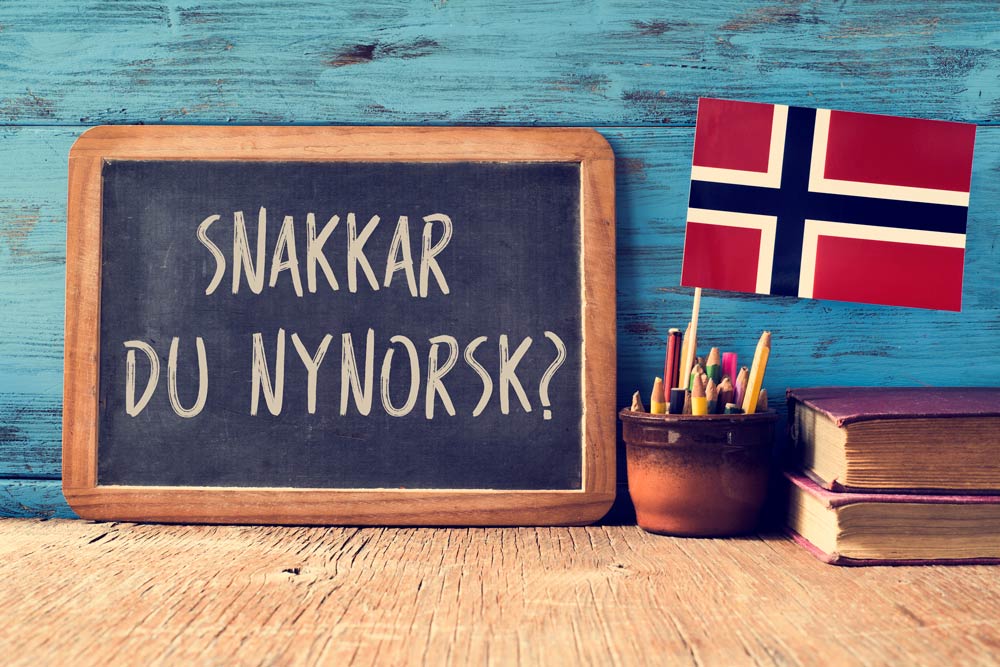There are two official written versions of the Norwegian language—bokmål and nynorsk—but spoken Norwegian is another situation entirely. As far as regional dialects, there are four main groupings of spoken Norwegian: Northern (nordnorsk), Central (trøndersk), Western (vestlandsk) and Eastern (østnorsk).
But did you know that there is no standardized way of speaking in Norwegian? Each area has its own talemål or dialect that differs from the written standards and no speech variant is considered better than the other.
How did dialects come to be?
According to snl.no, the Norwegian encyclopedia, geographical barriers and difficult travel conditions meant that historically there was limited contact between people from different regions, so pronunciation and vocabulary evolved in relative isolation. Mountain and valley dwellers tended to be more secluded, and their dialects remained intact, while those residing on flatter open land where travel was easier had more outside contact and therefore increased language influence.
New connections
One development that led to change was the presence of new roads: areas that previously had little contact were having to make themselves understood and their speech was influenced by this interaction.
Another “road” that later opened the channels of communication was that of technology. With radio, film, tv and internet allowing people to hear each other’s voices more frequently, understanding and influence has grown across dialects.
Dialect-positive
On current-day Norwegian tv and radio shows, programming embraces various dialects. Presenters may speak different dialects on the same broadcast, and in reality show settings, there is often a wide mix of regional speech. That is not to say that it’s effortless—even Norwegians don’t always understand each other.
In the 2022 NRK program 24-stjerners julekalender (24-star Advent calendar), a seasonal show where celeb contestants compete to be the best at a series of “Christmas skills,” one of the challenges was to decipher a story as told by a relative from the country. Watch the listeners’ faces as they try to piece together the details in Tante Britta Lise’s anecdote:
(clip starts at 8:49) https://tv.nrk.no/se?v=KMTE63003021&t=530s
Taking the first step
A good start is to practice reading both forms of written Norwegian. Most North Americans tend to learn bokmål, spoken in eastern and southern Norway. If that is the case for you, try out some nynorsk lessons on https://www.skoleweb.net/fagsider-norsk-skriving-nynorsk-nyttige-ressurser. Or put some words into the bokmål-nynorsk / nynorsk-bokmål translator for comparison: https://wordify.no/tekstoversetter/bokmal-og-nynorsk.
Learning the basics from various regions will also help you get a leg up on listening. As mentioned above, bokmål and nynorsk are written forms, but learning them will still give you a head start on spoken norsk. For the sake of brevity, here is a comparison of nordnorsk to the two written forms:
bokmål (written)
hva
hvem
hvor
hvordan
hvorfor
hvilken
nynorsk (written)
kva
kven
kvar / kor )
korleis
kvifor el. korfor
kva, kva for ein, kva slag(s), kven av
nordnorsk (spoken)
kva/ka
kem/kæm
kor
kordan/kossen
kvifor/koffør/korsen
korsen
bokmål (written)
jeg
du
han
hun
det
nynorsk (written)
eg
du
han
ho
det
nordnorsk (spoken)
e/eg/æ/æg/je/ei
du
han
ho
dæ
bokmål (written)
vi
dere
de
nynorsk (written)
vi/me
de/dokker/dykk/dekk
dei
nordnorsk (spoken)
ikke/ikkje
dåkker/dåkk
dei
Grid sources:
bokmål, nynorsk: http://elevrom.sprakradet.no/skolen/minigrammatikk/tema/personlege_pronomen
nordnorsk: https://nordnorsk.uit.no/malmerker/kv-sporsmal-utan-v2/
Use your eyes to listen
If you are watching a Norwegian tv program or speaking Norwegian in person, use your ears, but also focus on the speaker’s mouth and face for the best possible comprehension. There are no subtitles in life, so tuning into facial movements is the next best thing. After that, just try to relax your ears and catch as much as you can.
Ear training
In the NRK series “Gjør det sjøl,” a DIY crafting program for kids, presenter Morten Skatvik Strand from Senja in Northern Norway speaks in his usual dialect. The captions, however, are in bokmål. See if you can spot some of the nordnorsk words that Morten is saying. Hint: in the first minute, you’ll hear “ikkje,” “æ,” and “korsen” – see if you can catch them: https://tv.nrk.no/se?v=DNRR66000320&t=5s
Song lyrics are also a great way to learn words and fine-tune your listening skills. Here are some playlists of songs with lyrics closest to written standards and nordnorsk talemål.
Songs in Bokmål:
https://open.spotify.com/playlist/57OmIydjCNmecjelc8xCyM
Find a playlist of nynorsk songs here:
https://open.spotify.com/playlist/4k31IjV3vfDgA0siXGexPP
Nordnorsk songs:
https://open.spotify.com/playlist/6UYvka4DwQJVHumlPqAcWp
https://open.spotify.com/playlist/05zeHyWCkxPh046bu1ilzH
https://open.spotify.com/playlist/1DWBwRoNcpye3UEHWDvvQX

